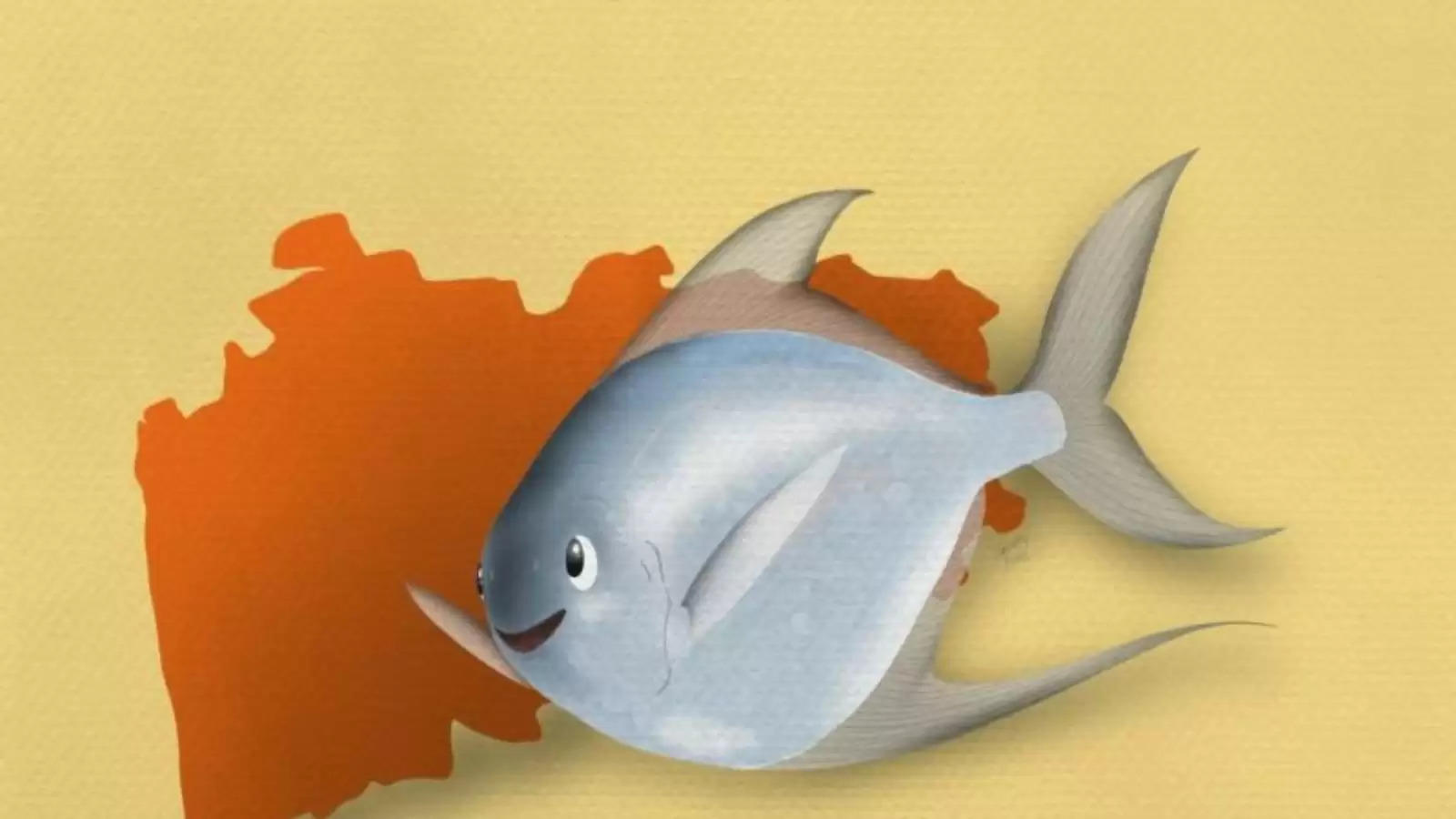The Maharashtra state government has declared the Silver Pomfret (Pampus candidus) as state fish to enable its conservation.
| Sep 15, 2023, 09:30 IST

The delectable Pomfret, known locally as Paplet or Sarangi is a staple in the coastal seafood cuisine in Maharashtra. But after noticing a drastic decline in their catch in the last few years, fisher associations from Maharashtra have urged the government to take measures to save the species, which is they claim is under threat from overfishing by large scale commercial fisheries.
Where are they found?
The Silver Pomfret inhabit inshore waters of the Indo-west Pacific, from the Middle East to East Asia. They are found typically in schools, and occasionally, in mixed groups with Threadfin breams and Ponyfish, over muddy seabeds.
What do they feed on?
As larvae these fish are pelagic (inhabiting open waters) and drift with ocean currents. As they mature, they transition to a benthic (living near the seabed) species, feeding predominantly on comb jellies, salps, and other small zooplankton. Adult silver pomfrets are also known to feed on small fish and fish eggs, and are opportunistic predators. Silver Pomfrets serve a crucial role in the marine food chain as predators of smaller fish and crustaceans, helping maintain the balance of prey species, and as prey for larger predators.
Why are they under threat?
Silver pomfrets hold significant commercial value and are a popular seafood choice. Mature silver pomfrets can weigh between 4-6kgs but because of being fished excessively, fish weighing less than 1kg are more commonly seen today, as younger individuals are also caught to meet the demand.
Their conservation status is different in different regions, with populations in the Persian Gulf now considered Vulnerable under the IUCN Red List. However, the Indian population hasn't been assessed yet.
Where are they found?
The Silver Pomfret inhabit inshore waters of the Indo-west Pacific, from the Middle East to East Asia. They are found typically in schools, and occasionally, in mixed groups with Threadfin breams and Ponyfish, over muddy seabeds.
What do they feed on?
As larvae these fish are pelagic (inhabiting open waters) and drift with ocean currents. As they mature, they transition to a benthic (living near the seabed) species, feeding predominantly on comb jellies, salps, and other small zooplankton. Adult silver pomfrets are also known to feed on small fish and fish eggs, and are opportunistic predators. Silver Pomfrets serve a crucial role in the marine food chain as predators of smaller fish and crustaceans, helping maintain the balance of prey species, and as prey for larger predators.
Why are they under threat?
Silver pomfrets hold significant commercial value and are a popular seafood choice. Mature silver pomfrets can weigh between 4-6kgs but because of being fished excessively, fish weighing less than 1kg are more commonly seen today, as younger individuals are also caught to meet the demand.
Their conservation status is different in different regions, with populations in the Persian Gulf now considered Vulnerable under the IUCN Red List. However, the Indian population hasn't been assessed yet.
